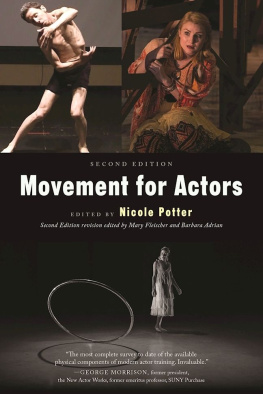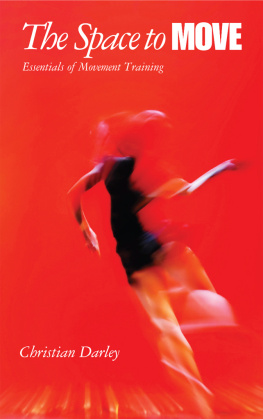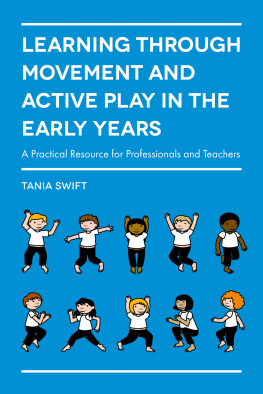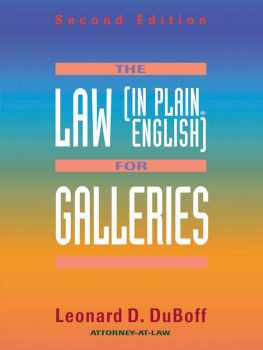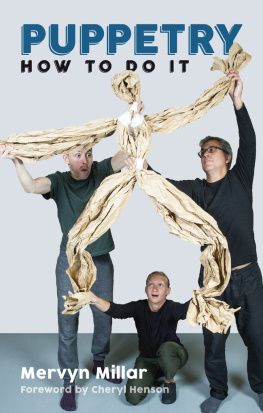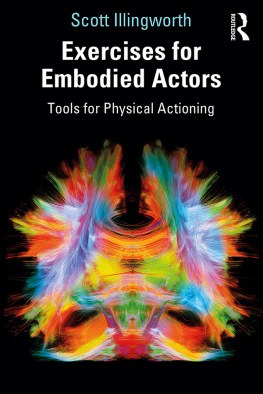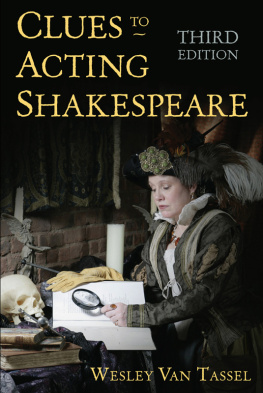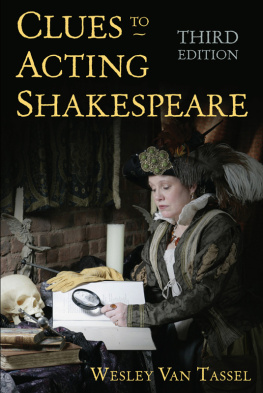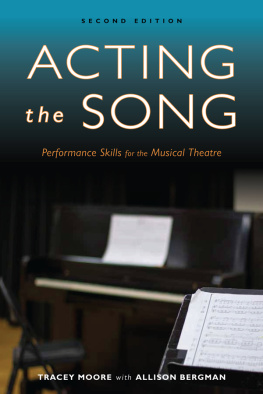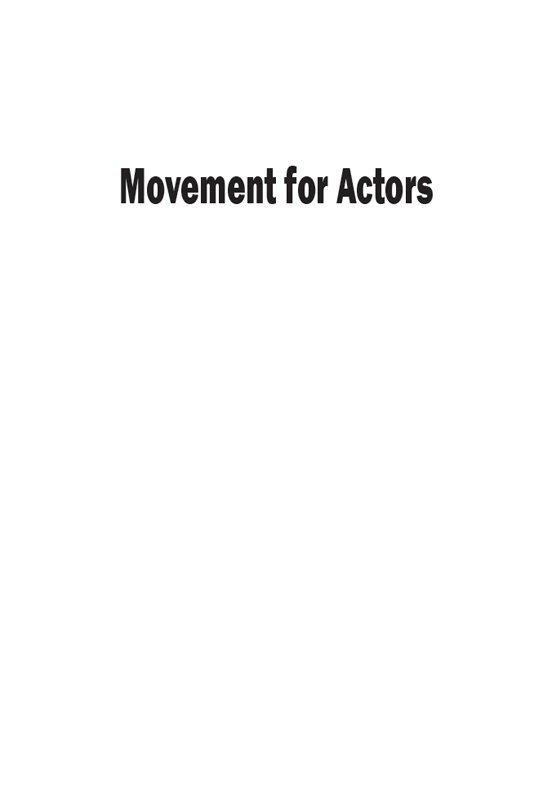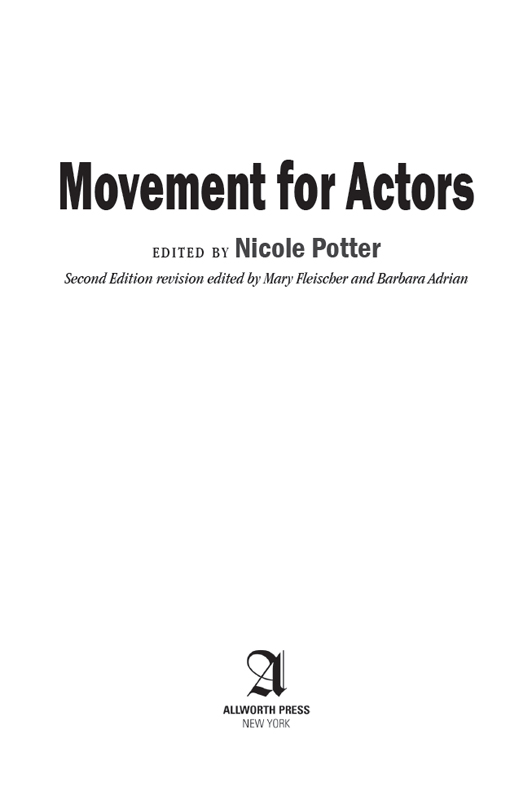Copyright 2016 by Nicole Potter, Mary Fleischer, and Barbara Adrian
The essays in Movement for Actors , Second Edition, were written expressly for this book. Copyrights for individual essays are retained by their authors, 2016.
All rights reserved. Copyright under Berne Copyright Convention, Universal Copyright Convention, and Pan American Copyright Convention. No part of this book may be reproduced, stored in a retrieval system, or transmitted in any form, or by any means, electronic, mechanical, photocopying, recording or otherwise, without the express written consent of the publisher, except in the case of brief excerpts in critical reviews or articles. All inquiries should be addressed to Allworth Press, 307 West 36th Street, 11th Floor, New York, NY 10018.
Allworth Press books may be purchased in bulk at special discounts for sales promotion, corporate gifts, fund-raising, or educational purposes. Special editions can also be created to specifications. For details, contact the Special Sales Department, Allworth Press, 307 West 36th Street, 11th Floor, New York, NY 10018 or .
20 19 18 17 16 6 5 4 3 2 1
Published by Allworth Press, an imprint of Skyhorse Publishing, Inc.
307 West 36th Street, 11th Floor, New York, NY 10018.
Allworth Press is a registered trademark of Skyhorse Publishing, Inc., a Delaware corporation.
www.allworth.com
Page composition/typography by Sharp Designs, Lansing, MI
Library of Congress Cataloging-in-Publication Data is available on file.
Print ISBN: 978-1-62153-541-6
Ebook ISBN: 978-1-62153-543-0
Printed in the United States of America
This second edition of Movement for Actors is dedicated to the memory of our friend and colleague, Nicole Potter.

Photo by Mark Talling
Contents
Preface to the Second Edition
S ince 2002, Movement for Actors has been widely read among performers, directors, choreographers, students, and teachers. It has been adopted by college courses and cited as a go to source for students and professionals alike. When Nicole Potter compiled and edited Movement for Actors for its first edition, there were many books available that were devoted to particular movement techniques and physical methods of acting, but none that provided an introduction to a diversity of approaches within one volume.
Reflecting on her experiences as a performer, director, and teacher, Nicole realized that what she had found missing in her own training was the ability to synthesize. Discipline and spontaneity, knowledge and instinct, technique and inspirationhow do you reach the place where these are integrated? she asked in her introduction. This question became the guiding impetus for the book in which the body is the place of synthesis. In addition to its mix of history, theory, and inspiration, practical application and suggested exercises were distinctive aspects of many of the chapters. In her intent to focus on the body as the performers instrument, Nicole designed the book to be read in the body as well as the mind. More than an anthology, Movement for Actors invites explorations of the integration of creativity and technique. This is accomplished through an eclectic array of physical approaches that intersect and dialogue with one another over the course of the book.
As editors of the second edition, we have honored Nicoles original design and inspiration and have expanded Movement for Actors to include six new chapters on topics that have relevance across many types of physical performance: authentic movement, yoga for actors, Body-Mind Centering, Grotowski, stage combat, and Bartenieff Fundamentals SM for actors. In addition, we have revised and updated the appendices on training resources and further reading to encourage readers to pursue some of these methods and practices.
We wish to thank all the authors, and Tad Crawford, Allworths publisher, for bringing us the opportunity to expand on Nicole Potters original vision.
Barbara Adrian and Mary Fleischer
Introduction
A long time ago, my brother and I used to make up plays that we would produce by enticing the neighborhood kids with promises of glory and then enslaving them in endless rehearsals on my grandmothers front porch. At that time, I had no training as an actress, and whatever I chose to believe seemed true enough to me. My sense of truth was not disturbed when my brother wrote an opera about a woman who lived in a bathtub (a wheelbarrow turned on its side, for the purposes of the Porch Premiere), and whose death scene required that she slide down the drain with the bubbles.
Some time later, I went to theater school. My training started with the Method, as so often happens in this country, and I was inculcated with a mistrust of work that I perceived as starting from anywhere other than wherever I perceived Method acting as starting from (personal Truth, I think). I codified what I learned into a strict set of rules, thus providing myself with a narrow and brittle idea of what was right and what was wrong, what was good and what was bad. I fancied that I was becoming more discerning, because I grew to dislike nearly everything, including my own ideas. This was a problem, for while I enjoyed being able to analyze the work I saw from a specific point of view, I missed the trust in my own ideas. It was as if I had two parallel tracks going: On the one hand, I had this (to me) amorphous technique, which I couldnt quite figure out how to practice myself, and on the other hand, I had my once beloved and now muzzled inspiration. The two were never going to merge.
While I was thus engaged in honing my critical ability, I happened to see both Andre Gregorys Alice in Wonderland and Lee Breuers Shaggy Dog Story . Here were plays that defied my perception of the Laws of Good Theater. They had schtick, they had style, they looked as if they had been created by kids on a rainy day in a junk-filled attic, and they felt True. Of course, the actors in Manhattan Project and in Mabou Mines had far more technique than I did, and their evocation of childs play was a deceptiona deception of simplicity, the best kind in art. Why was this work so enthralling, and why was it so beyond anything I could conceive of? My conclusion? I was missing something, a turnoff somewhere. There had to be a way for my divergent pathways to become one.
What I was missing, what most novitiates are missing when they begin the arduous and ecstatic pilgrimage into a performing life, was the ability to synthesize. Discipline and spontaneity, knowledge and instinct, technique and inspirationhow do you reach the place where these are integrated? At last, a sudden, laughably simple insight: The body is the instrument. The crossroads exist within the body.
Which is why, to make a long story short, this book has been created. In performance, the actors body, and all that it entailsalignment, shape, senses, impulses, sounds, gesturestells the story. If the body is the place of synthesis, it is as important for the student, teacher, and director to be aware of an array of approaches as it is for them to have knowledge of diverse styles of theater and acting techniques.
There are manyalthough by no means an exhaustive catalog ofbody and movement disciplines contained in this eclectic collection. Some writers included here offer insights into the discipline of a historically well-known master teacher, and some have synthesized their training and their experiences and gone on to create unique methodologies. Yet each one brings his or her own singular perspective and ideas to movement for actors. Many of these approaches intersect with and build upon each other, although the contributorsperformers, teachers, directors, choreographersmay ultimately veer off in very different aesthetic directions. Still, I think all of them would agree that the pleasure in seeing a polished performer fully realize a mask or execute precise choreography is equal to the satisfaction derived from watching an actor who fully utilizes her teacup to express her disapproval of her scene partner or who sweeps the floor with conviction, allowing her feelings to be displayed (or artfully masked) through this action.

